Knee joint arthritis combines two processes: the destruction of the cartilage and the growth of osteophytes or bone spurs.The process stage is determined by radiography.It is believed that arthritis is the destruction of knee joints with age, the natural process of aging.The causes are muscle weakening and poor blood supply to the tissue.How to treat yourself without surgery?Eliminate factors that reduce muscle tone.
Causes
The causes of arthrosis are not yet determined by medicine,Only risk factors are named:Age over 45 years, knee and overweight injuries.Almost 50% of the adult population has ever complained about the knee joint.
With arthrosis, the cartilage of the bone ends is eroded or completely absent.Damaged tissue is not a source of pain because there are no receptors.Inflammation in nearby structures causes characteristic symptoms.
The body continues to regenerate damaged tissue, but the cartilage grows unevenly.As a result, irregularities are formed that damage other elements of the Union.The nature of osteophytes is explained by compensation for a smooth joint cartilage.Another version shows that the growth of "spurs"It is accompanied by an attempt to stabilize the medially or side joint due to muscle weakening.
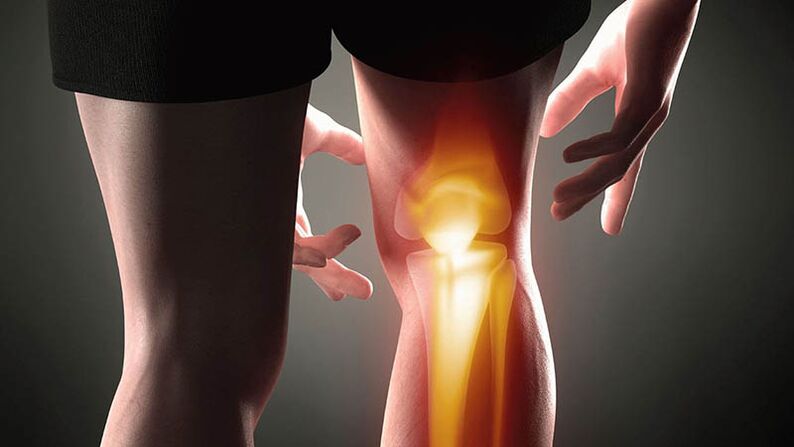
What is the chronic arthrosis of the knee joint?Pain occurs in tendons and ligaments only when muscle forces cease to keep the bones and control them.Therefore, the biomechanical causes of pain and arthrosis are distinguished:
- Against the backdrop of a long placeThere is a compression between the inguinal ligament and the iliac-linguistic muscles of the artery and the femoral nerve, which weakens the force of the front of the thigh and leads to the appearance of tension in the knee cup.
- Long -term landing squeeze gluteal musclesWeakening them.On the contrary, pear -shaped muscles begin to function, under which the sciatica passes.During its compression, two -headed muscles weaken, the corner of the thigh and lower leg changes.The knee is injured.
- Walking heelsIt causes calf muscle tension, unfolds the pelvis, weakens the medium gluteal muscles.The femur bone turns inside, the ligaments are loaded along the inner part of the knee, increases a medial meniscus, osteophytes grow.
- Flat -footAccompanied by the wearing of unpleasant shoes, weakening the main muscles and the growth of lordosis, unfolds the tibial bone from the outside, which leads to knee pain due to the violation of biomekania, the development of a baker's cyst.
The pathological -touching pathological chains are associated with a decrease in the tail of the tail in childhood, scoliosis caused by diseases of the internal organs.People who have a different shoulder height,Over time, they begin to complain to the knee, as the fascinating chains at the front of the body include the extensor of this joint - the thigh rectus muscle.
Symptoms
The degenerative process disrupts the function of the joint, leads to pain and stiffness.It is believed to beFrom cartilage and bone, the effect on the muscles begins.Practice shows the opposite -The pain in the knee joint occurs in the tendon sites- fasteners of weakened muscles of extensors, flexors and knee stabilizers.
The main signs of the threat of cartilage coating:
- Occasionally, the embarrassment associated with walking, the feeling of "not so set foot".
- The appearance of pain with a direct load on the joint and muscle, bending and stretching it - collecting, glue the stairs.
- Knee pain and stiffness after prolonged inaction or rest, for example, when you get out of bed in the morning, which is associated with venous blood stagnation.
The main signs of arthrosis are caused by loads on the weakened muscles:
- The knees on the knees are about the fact that the gluteal and two -headed thigh muscle does not work, and the rectum thigh muscle extends too much, creating knee discomfort.
- The pain when bending the joint is associated with the weakness of the flexors - the two -headed muscles and the tendon tension of the quadrilateral.
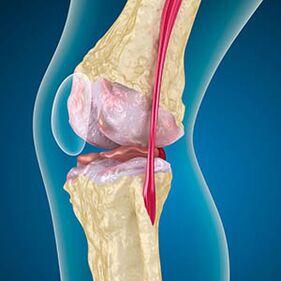
Ellingance is caused by soft tissue damage, inflammation of the tendons and joint bags.The occurrence of knee heat, swelling indicates the accumulation of inflammatory exudate -Arthrosis is often associated with bursitis, synovite, tendinitis.
Crunch in the knee is painless and traumatic.Clinics and other sounds do not say that bones are corrosion.Signs of breach of knee durability -The weakness of one of the muscle control.
Creeding caused by bone friction in the bone does not occur at the beginning and at the end of the amplitude of movement but in the middle,Even with the passive bowing of the union.The joint blockage is caused by the coating of the cartilage and tendons, which creates a feeling of fixation.The bones with each movement are controlled by the muscles.Their premature reduction leads to a changed direction of bone movement, blocking.
1st degree
Determination of arthrosis scale occurs from x -rayDiscovering participation in the pathological process of bone structures.Their change indicates that the muscle system has been in an imbalance for 5-10 years.As a rule, peopleFor several years they experience painful pain.
In the first stage of arthrosis, which is randomly detected, a small increase in bone stimuli occurs.Growths appear in places of greater union instability.Typically, patients rarely experience pain or discomfort during movement.
The weakness of some muscles is offset by the function of others, without causing severe spasms and overload.Running and weight training provoke symptoms, as weakened muscles are loaded.The weakness (hypotension) of the muscles is associated with impaired blood supply and intrigue.
2 -degree
The second stage of arthrosis is considered easy.Radiography detects significant bone stimulation, but the cartilage is not affected.The amount of synovial fluid is reduced, but the symptoms of pain appear after long walking and jogging, stiffness in the joints and pain when bending and in the knee position.
Early X -Ray characteristics of the second phase of knee arthrosis:
- The pointed edges of the tubercles between -are described in the tibi, where the cross -shaped ligament attached;
- narrowing of the common gap on the medial side;
- The highlighted ends of bone conditions on the sides of the media, less frequently in lateral - depending on the development of valgus deformity or variable joint.
For the second stage in LarsenThe narrowing of the common gap by more than 50% is characteristic, but this can only be controlled in dynamics or compared to a different union.
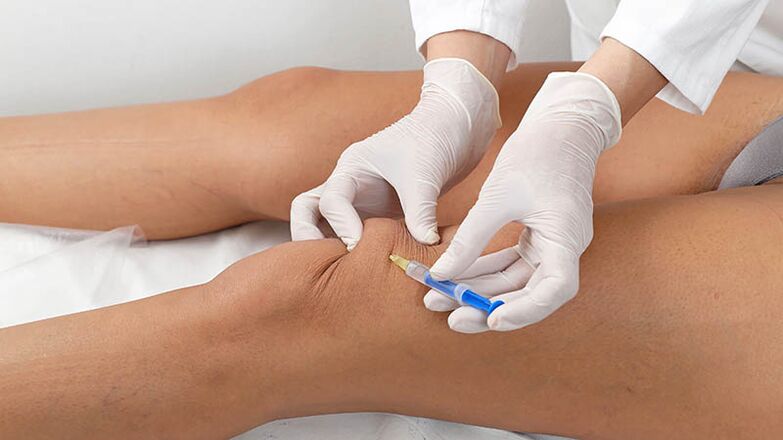
3 degrees
In the third stage of arthrosisPain during flexion and stretching of fusion become constant.During irritation, the fusion rashes and swells, painful pains do not stop at rest.Around the knee, swelling, significant deformity of the joints of the joint occurs.
Signs of moderate arthrosis of the knee joint in the third stage:
- The common gap is significantly narrowed;
- the presence of subcondrial sclerosis in the loaded sections;
- Numerous osteophytes at the edges;
- a rare view of subcondular cysts;
- Synovites, the appearance of a cyst of a knee baker;
- unequal surfaces of femur and tibia, loss of joints of the joint;
- Change in patella form;
- Calcification and Committee seals;
Rarely the fourth stage is complemented by necrotic lesions.Why is arthrosis dangerous?The disease violates the ability to move, creates dependence on others.
Troubleshooting
Signs of orthopedist study edema, palpon joint for pain, studies the active and passive range of movement.Necessarily inspects the lumbar spine becauseIt is there that pass the nerves, which ensure the function of the thigh muscles.
Radiography indicates the presence of osteophytes, a difference in the space between the femur and tibia bones, which indicates the loss of knee cartilage.Sometimes X radiation of the knee joints shows significant signs of cartilage coating, but patients do not suffer significant pain.On the contrary, the first phase arthrosis may disrupt the knee function, as the cause of the pain is the hypotonic muscles.
If an X -Ray does not indicate major changes, thenThe doctor prescribes an MRI of the knee and lumbar joint.Diagnosis visualizes ligaments, tendons and muscles, meniscus to find other sources of pain.
Laboratory diagnostics is requiredIf you suspect an infectious joining or gout injury.
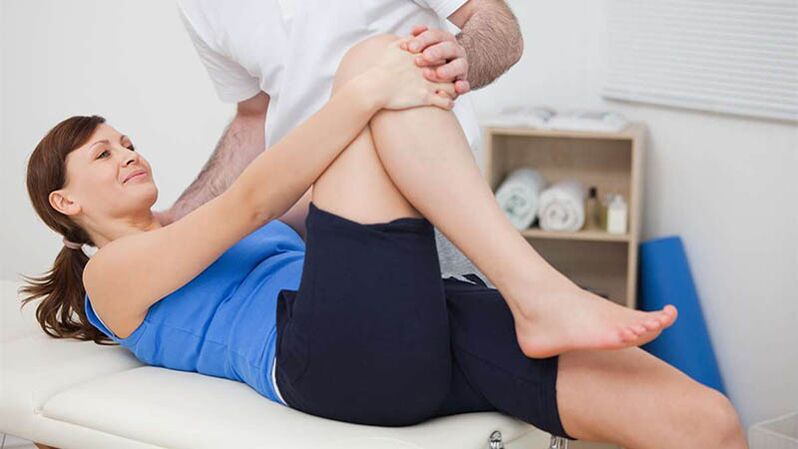
Treatment
Arthrosis therapy must be comprehensivetarget the cause of the disease.With endocrine malfunctions capable of affecting connective tissue, proper treatment is performed.Patients with overweight are recommendedGo to the right food.The irritations are removed with medication.
Treatment
Drug treatment for pain consists inrecipe of anti -inflammatory drugs.Non -steroidal anti -inflammatory drugs with prolonged useAdversely affect the function of the stomach.
Treatment regime includes chondroprotectors, who only help when taking long courses long3-6 months.Pharmacies present a large number of medicines in this group.
It is believed that the ingredients of these medicines help to regenerate the cartilage structure, have an analgesic effect.
Controlled studies are done by little, and they had to do with complex treatment - arthroplasty, physiotherapy, diet.
Attention!The chondroprotectors are screwed into courses - you can drink a course of one medicine, and the second course - the other, and compare the effect.However, uncontrolled medicine is not the best idea.Before you start taking drugs, consult your follow -up doctor.
How and what to relieve pain and swelling?Intra -articular injections are most popular:
- Steroid drugInhibit inflammatory reactions to the level of immune cells, removing acute pain, joints and swelling.
- Hyaluronic acidIncreases the viscosity of the joint fluid, reducing the friction of the articular surfaces.
Important!The effect of the medication is sufficient for 6-12 months, but at the same time degenerative processes do not stop.
Surgical treatment
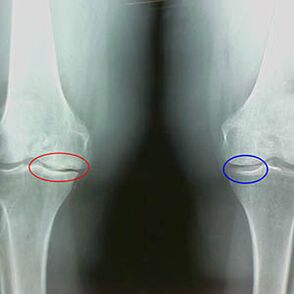
With low effectiveness of medication, patients are offered arthroscopy- A minimal invasive procedure for removing bone growth, joining audit.If necessary, surgeons perform ligaments and cartilage plastic, remove coated clothes seals.
Bone osteotomy is intended to change the load axis in the coupling.The doctor cuts the femor or berets to change the contact areas of the common surfaces.Surgery is often performed in new patients.
Total replacement of the knee joint or arthroplastyRequired in the heavy stage of arthrosis (third or fourth degrees).Surgical treatment does not always solve the problem, as it requires diligent and everyday rehabilitation, muscle strengthening.
Knee changes can be compensating with respect to the pelvis, therefore, without the restoration of muscle balance, the hip joint suffers next.
Physiotherapeutic treatment
In the environment of physiotherapy, mud applications, phonophoresis and magnetic therapy are used.The action of external factors is intendedStimulation of blood supply and tissue regeneration, relief of inflammation and swelling.
Treatment with popular and non -traditional methods
Popular remedies recipes for the treatment of knee joint arthrosis usually at homeIn order to remove swelling and elimination of pain.Most often, horseradish leaves and gloomy potatoes are used, sometimes mixing and vodka for compresses are mixed.
It is impossible to completely stop degeneration.You can affect the kidney exchange using celery juice.The kidneys are associated with the iliac-luxury muscle, which is associated with the pathology of the hip joint.Normalization of the gall bladder and liver function improves the condition of the knees.
Methods of the initial phase of the initial phase of the knee arthrosis include decoction of anti -inflammatory plants:Chamomile, St. John's Wort, Immortality.Land waste, sea salt and kerosene are used.Magnesium salts baths, pine infusions are used.
Therapy and manual massage
Manual therapy for osteoarthrosis of the knee joint helps, if a specialist understands single muscular inequalities.Muscle tests help find weakened muscles that stabilize the knee, determine the cause of dysfunction and eliminate it.
The source can be not only the joint block in the Lumbar region,But also dysfunctions at the level of blood supply, internal organs, endocrine and biochemical failures.Therefore, the manual therapist must have osteopathy skills, applied kinesiology in order to influence many factors.
Massage is an auxiliary tool for manual therapy, self -help.A patient with arthritis of the knee joint can independently cook muscle tendons that control the movement of the limbs:
- areas around large gluteal muscles;
- lines on the front surface of the thigh - from pelvis to patella;
- The lateral surface of the thigh from the large oscillation to the thigh of the thigh;
- Groin area along the inguinal ligament;
- The inner surface of the thigh (along the line of the main channel).
Massage is carried out in place, without much pressure.
Therapeutic
The cause of arthrosis is the weakening of the muscles caused by problems in the lower back, pelvis, abdominal cavity.Perform arthritis prevention and knee arthritis exercises for the elderlyIt is possible to grow strength but not tone.
Without working in their weakening factors with the help of manual therapy, it is difficult to achieve complete restoration of biomechanics.Yoga further deprives stability joints.Among the treatment methods, it is better to preferPilates and Scandinavians standing.
Diet
Food is arranged, first of all, to fight overweight.It is important to abandon sugar and simple carbohydrates, Add fiber, magnesium, group B vitamins and calcium with arthritis of the knee joint, which are important for muscle activity.tryExclude dairy products, as almost 80% of the population has lactose intolerance.
Prevention of knee joint arthrosis
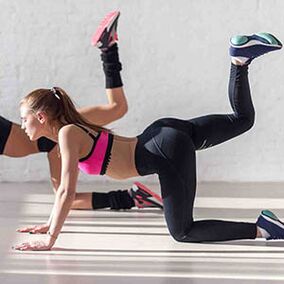
Attempts to strengthen muscles not always help, as intrigue and blood supply have not been restored.The function of the hip muscle depends on the lumbar plexus.
Changes in the lower back associated with the weakness of the abdominal muscles also affect the knees.Therefore, in men with a "belly beer", arthritis is more common, as in women after many - festers, some gender with diastasis - a weakening of the abdominal wall muscles.
Operations in the pelvis and internal organs form adhesions affecting the vertebrae of the lumbar region, violating the intrigue of the muscles around the knee.
Which doctor to contact the arthrosis of the knee joint?Diagnosis will help to make an orthopedicwhich will insist on operation.The best results are provided by the work of multidisciplinary teams in rehabilitation centers.
The best that can be done for nodes:Eat well, monitor weight, walk more, visit a massage or osteopath therapist once every three months.
Reviews for the treatment
Positive examinations can only provide a comprehensive treatment of deforming arthrosis of the knee or gonartrosis.Anesthesia, intra -articular injections act temporarily, suppressing a natural inflammatory reaction.
cONcluSiON
The problem of arthrosis is that medication therapy temporarily eliminates only pain syndromes.The reasons are left without identification and impact.Ergotherapists who learn how to live with knee joint arthritis can come to help and how to use a cane properly.But the service is only available in private clinics that perform rehabilitation.























